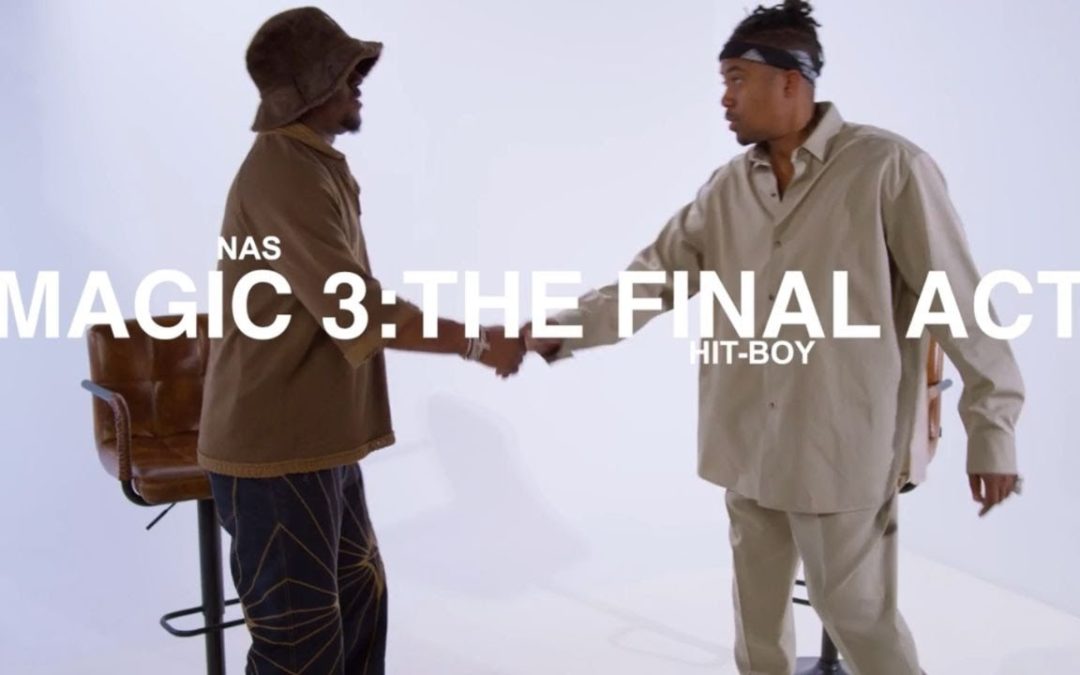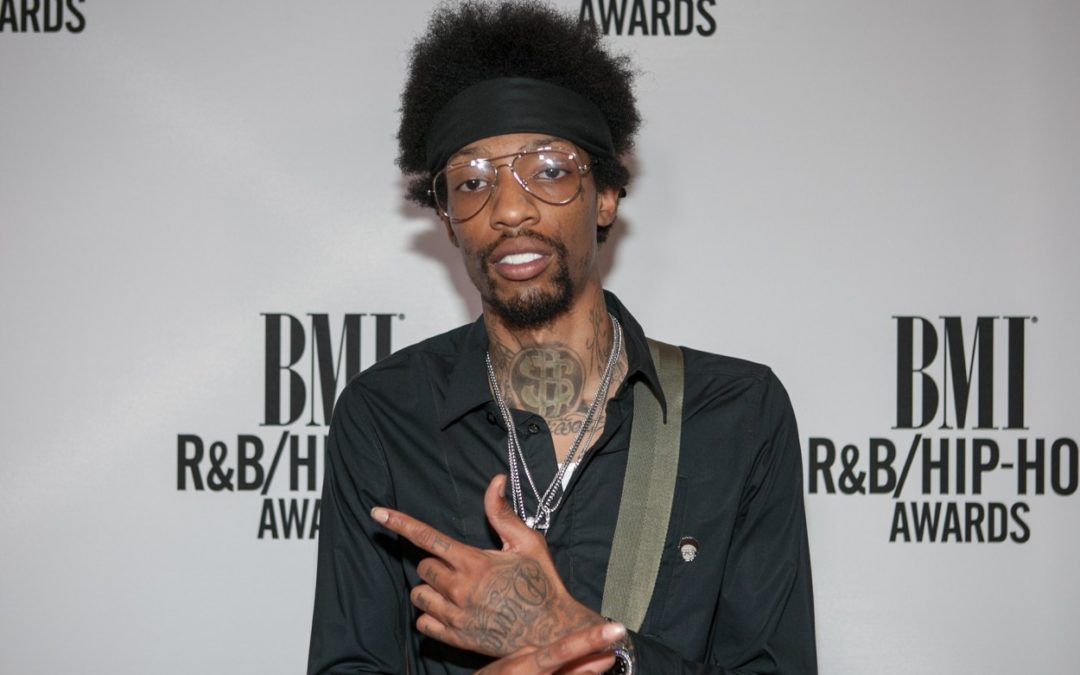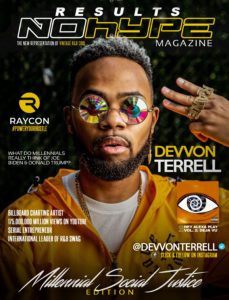
by Jonathan P-Wright | Oct 26, 2023 | Latest, Music News |
Photo by israel palacio on Unsplash
The landscape of hip-hop has evolved significantly in recent years, with the emergence of new artists and the rise of streaming platforms. However, according to rapper Bow Wow, there is a concerning trend of record labels putting out “subpar ass artists” who lack the necessary skills and knowledge to navigate the industry successfully. In this article, we will explore the importance of artist development in the music industry and why it is crucial for record labels to invest more time and resources in nurturing talent.
The Current State of Hip-Hop
Bow Wow, also known as Bow Weezy, recently expressed his frustration on social media regarding the lack of artist development in the music industry. He believes that record labels are too quick to sign and promote artists who may not be ready for the challenges of the industry. In his tweet, he highlighted the importance of bringing back artist development programs at these labels to ensure that artists receive the necessary training and guidance.
The Role of Record Labels
Record labels play a significant role in shaping the careers of artists. They have the resources and expertise to provide artists with the necessary tools and opportunities to succeed in the highly competitive music industry. However, in recent years, there has been a shift towards signing artists based on their viral success or social media following, rather than their artistic abilities or potential for growth.
The Need for Artist Development
Artist development programs are designed to help artists refine their skills, develop their unique sound, and navigate the complexities of the music industry. These programs provide artists with the knowledge and tools they need to succeed, both creatively and professionally. By investing in artist development, record labels can ensure that the artists they sign are prepared for the challenges they will face and have the potential to create lasting, impactful music.
The landscape of hip-hop has evolved significantly in recent years, with the emergence of new artists and the rise of streaming platforms. However, according to rapper Bow Wow, there is a concerning trend of record labels putting out “subpar ass artists” who lack the necessary skills and knowledge to navigate the industry successfully. In this article, we will explore the importance of artist development in the music industry and why it is crucial for record labels to invest more time and resources in nurturing talent.
The Current State of Hip-Hop
Bow Wow, also known as Bow Weezy, recently expressed his frustration on social media regarding the lack of artist development in the music industry. He believes that record labels are too quick to sign and promote artists who may not be ready for the challenges of the industry. In his tweet, he highlighted the importance of bringing back artist development programs at these labels to ensure that artists receive the necessary training and guidance.
The Role of Record Labels
Record labels play a significant role in shaping the careers of artists. They have the resources and expertise to provide artists with the necessary tools and opportunities to succeed in the highly competitive music industry. However, in recent years, there has been a shift towards signing artists based on their viral success or social media following, rather than their artistic abilities or potential for growth.
The Need for Artist Development
Artist development programs are designed to help artists refine their skills, develop their unique sound, and navigate the complexities of the music industry. These programs provide artists with the knowledge and tools they need to succeed, both creatively and professionally. By investing in artist development, record labels can ensure that the artists they sign are prepared for the challenges they will face and have the potential to create lasting, impactful music.
There have been numerous success stories in the music industry that highlight the importance of artist development. Artists like Symba, Westside Boogie, Lady London, and Lola are just a few examples of talented artists who have benefited from proper artist development. These artists have honed their craft, developed their own unique styles, and gained recognition for their talent.
The Future of Hip-Hop
Bow Wow’s call for record labels to prioritize artist development reflects a growing sentiment within the industry. There is a need for change and a return to nurturing talent, rather than focusing solely on short-term gains. As the music industry continues to evolve, it is essential for record labels to invest in the future of hip-hop by supporting and developing emerging artists.
Conclusion
Artist development plays a vital role in the success and longevity of artists in the music industry. By providing artists with the necessary training, guidance, and resources, record labels can ensure that they are nurturing talent and creating opportunities for artists to thrive. The future of hip-hop depends on a return to artist development, where artists can grow, evolve, and create music that resonates with audiences for years to come.

by Fabiola Noel | Oct 25, 2023 | Latest, Music News |
Photo by Nainoa Shizuru on Unsplash
Hype Williams, a prodigious music video director, is a name that reverberates throughout the music world. His groundbreaking vision has shaped the music videos of some of the most influential artists in the industry, such as Jay-Z, Missy Elliott, and DJ Khaled. This article delves into the stories behind Williams’ impactful work, exploring the collaborative efforts and creative processes that have marked his legendary career.
The Team Behind the Vision
The indelible visuals that Williams has been known for over the past three decades were not the work of a single individual. Williams, despite his grandiose ideas and pioneering vision, required a team to transform his concepts into reality. His collaborative endeavors involved working closely with various creatives, including June Ambrose, an imaginative costume designer, Malik Hassan Sayeed, a talented cinematographer, and Connie Orlando, a dedicated producer, among others.
Artists such as Jay-Z, Missy Elliott, Kelis, and DJ Khaled, placed their trust in Williams, faithfully following his direction. This collaborative approach was critical in producing 2-3 music videos a month at the peak of Williams’ career.
Jay-Z: From “Can’t Knock The Hustle” to “Big Pimpin”
Jay-Z’s collaboration with Williams began in 1996 with the music video “Can’t Knock The Hustle”. The video’s cinematic feel was amplified by the stunning cinematography of Malik Hassan Sayeed. The grandeur of the visuals and Williams’ unique eye for detail elevated the video to a whole new level.
The duo’s groundbreaking collaboration continued with “Sunshine” in 1997, and “Big Pimpin” in 2000. “Big Pimpin” marked their first high-budget video. Williams’ direction and vision for the video were instrumental in pushing the album sales from one million to four million.
Missy Elliot: The Magic of “The Rain” and “She’s a Bitch”
Williams’ collaboration with Missy Elliot led to the creation of visually stunning music videos like “The Rain” and “She’s a Bitch”. Williams’ innovative ideas, coupled with Elliot’s risk-taking attitude, resulted in captivating and futuristic music videos.
For “She’s a Bitch”, Williams suggested the bold idea of Elliot sporting a bald head. This idea, along with Elliot’s futuristic wardrobe and make-up, made the video a masterpiece. These visuals have become iconic in the music industry, proving to be a work of art set to inspire future generations.
The Costuming Genius of June Ambrose
June Ambrose, the costume designer behind some of Williams’ most iconic videos, played a crucial role in bringing his visions to life. Ambrose designed the costumes for videos such as “Mo Money Mo Problems” and “The Rain”. Her ability to create custom, out-of-the-box costumes on short notice was instrumental in setting the tone and visual impact of these videos.
Fatima Robinson: Choreographing the Moves
Fatima Robinson, the choreographer for videos like “Rock The Boat” and “Put Your Hands Where My Eyes Can See“, was instrumental in bringing Williams’ vision to life. Her choreography, combined with Williams’ innovative direction, resulted in music videos unlike any seen before.
Margo Wainwright: Making Iconic Videos a Reality
Margo Wainwright, the former video commissioner at Def Jam, worked closely with Williams to produce iconic videos for Def Jam artists. Despite the astronomical budgets associated with Williams’ videos, the results were always worth the investment. Videos such as “Big Pimpin” and “Hate Me Now” were game-changers in the music industry, becoming iconic symbols of the culture.
Hype’s Legacy: Beyond Music News
The impact of Williams’ work extends beyond music news and the music industry. His innovative direction and groundbreaking vision have inspired countless artists and filmmakers. His contribution to the representation of Black culture in media is unparalleled. His work has set the bar high for music video directors, challenging them to think outside the box and push the boundaries of creativity.
Williams’ legacy continues to inspire new generations of artists, filmmakers, and music video directors. He has paved the way for creative expression in the music industry, proving that with a bold vision and a talented team, anything is possible. So, here’s to Hype Williams, the man who showed the world what Black opulence looks like and continues to shape the visual landscape of the music industry.

by Laghe Andrews | Oct 13, 2023 | Latest, Music News, New Music Alert |
Nas, an iconic figure in the music industry, marked a significant milestone recently. The renowned lyricist and hip-hop sensation turned 50, commemorating the occasion with the release of his sixth consecutive album with Hit-Boy, titled “Magic 3“. Nas’s birthday, which fell on September 14, was an event to remember, graced by some of the biggest names in the hip-hop fraternity. The illustrious guest list included Fat Joe, Diddy, Kendrick Lamar, Mary J. Blige, Q-Tip, Raekwon, N.O.R.E., along with numerous others.
Nas’s Half-Century Celebration
On September 25, Nas’s fervent fans were offered a glimpse into the grand birthday bash. This came in the form of a music video for “Fever”, a track from the “Magic 3” album. The song masterfully samples Bit ‘A Sweet’s “Speak Softly” and cleverly borrows elements from the classic Illmatic cut “Represent”.
The video captures the essence of the exclusive event, showcasing attendees dressed in their finest attire. The footage artfully alternates between scenes from the party and shots of Nas in a solitary setting, eloquently delivering his bars. His lyrics reflect on his life, career, and the journey that has led him to this milestone birthday.
Nas’s lyrical prowess and his ability to produce deeply resonant narratives have established him as a reputable figure in the music industry. His career spans over three decades, during which he has released numerous critically acclaimed albums and collaborated with several high-profile artists. His ability to craft intricate narratives about life, struggle, and success, all while maintaining a unique musical style, has garnered him a dedicated fan base.
The video for “Fever” offers a look into the glamorous party that marked Nas’s 50th birthday. The event was a star-studded affair, with many prominent figures from the hip-hop community in attendance. The footage interweaves scenes from the party with shots of Nas delivering his bars in a room by himself, creating a compelling visual narrative that complements the song’s lyrical content.
“Fever” is a deeply personal track in which Nas reflects on his life and career. The lyrics are filled with references to his past experiences and his journey in the music industry. Nas talks about his evolution as an artist, his accomplishments, and his plans for the future. He also pays homage to his roots, acknowledging the significant role his upbringing in Queens, New York, played in shaping his music and character.
Nas’s Musical Collaborations
One of the key highlights of Nas’s career has been his collaborations with other artists. His partnership with Hit-Boy, for instance, has resulted in six consecutive albums, including “Magic 3”. These collaborations have not only produced some of Nas’s most popular tracks but also contributed to his growth and evolution as an artist.
Nas’s Influence in the Music Industry
Nas’s influence extends beyond his music. His contributions to the hip-hop genre have significantly shaped its landscape, influencing many artists who followed in his footsteps. His lyrical prowess, combined with his unique musical style, have set him apart in an industry often characterized by rapid change and fleeting trends.

by Jesse Swindell | Sep 11, 2023 | Latest, Music News, New Music Alert |
Emerging from the vibrant landscapes of South Memphis, Key Glock has established himself as a force to be reckoned with in the world of hip-hop. On September 5, Glock introduced his fans to a new visual masterpiece for his track, “Penny.” The music video, a product of the combined efforts of producers Mannie iL and Swaeze, showcases Glock’s unflinching focus on wealth and the lifestyle it brings.
“Penny:” A Symphony of Swagger and Success
In “Penny,” Glock flaunts his financial prowess through his lyrics. He raps about his high-end lifestyle, including a shoutout to his dentist for the “20 pointers” in his mouth and his recent extravagant purchase that equates the cost of a Bentley. Glock’s lyrics echo his insatiable hunger for success, as he expresses his intention to turn down a 10 million dollar deal, aiming for a billion instead.
Through his lyrics, Glock underlines his unique style, turning heads with his Prada overalls that give him a “hillbilly” appearance. The song stands as a testament to Glock’s ability to juxtapose the commonplace and the extraordinary, getting the listeners hooked to his unique narrative.
The Visual Feast: Living the High Life
The music video for “Penny” complements the overall theme of the song. In the clip, Glock can be seen enjoying the high life, surrounded by his crew on a private jet. The video captures Glock’s carefree and extravagant lifestyle, with scenes of him being in the company of gorgeous women at an indoor basketball court.
Key Glock on Private Jet
The visual narrative of the music video aligns perfectly with Glock’s lyrics, creating a comprehensive portrayal of the rapper’s life and aspirations.
“Penny” is a part of Glock’s album, “Glockoma 2 (Deluxe),” which was released in February. The album, an extension of the original “Glockoma 2,” features eight additional tracks with zero features, staying true to Glock’s independent approach to his music.
The album boasts beats from some of the industry’s most renowned producers, including BandPlay, Tay Keith, Bankroll Got It, Hitkidd, Sledgren, Teddy Walton, DY Krazy, and more. These contributions have significantly enhanced the sonic landscape of the album, making it a well-received LP.
In an interview with “Big Facts,” Glock highlighted his determination to maintain his individuality in a competitive industry. He emphasized the importance of being oneself, irrespective of the environment or the people around.
“I try my best to not be like the next person. Whatever you do, no matter what room you in, no matter who in the room, just be yourself. Don’t try to adapt to the n**gas. Be you,” Glock commented.
This philosophy is evident in Glock’s work. His music videos, including “Penny,” showcase his unique style and approach to music, making him a stand-out artist in the world of hip-hop.
Final Thoughts
Key Glock’s latest music video for “Penny” is a testament to his unique aesthetic and his unwavering focus on success. The video, coupled with Glock’s infectious energy and catchy lyrics, offers viewers a sneak peek into the extravagant lifestyle he leads. It’s a reminder of Glock’s individuality in the music industry and his relentless pursuit of excellence.
To get a taste of Glock’s unique style and swagger, watch the music video for “Penny” below.

by Jonathan P-Wright | Sep 1, 2023 | Uncategorized |
Image credit: Jamie Lamor Thompson / Shutterstock.com
Sonny Digital, a talented artist and producer based in Atlanta, has been making waves in the music industry for over a decade. Known for his contributions to the trap subgenre, Sonny Digital has worked with some of the biggest names in hip hop, including Future, Kanye West, and Travis Scott. While he initially gained recognition as a producer, Sonny Digital has recently shifted his focus to his own artistry as a rapper. With the release of his latest single “Could Be Worse,” produced by Buddah Bless, Sonny Digital continues to establish himself as a standalone artist.
“Could Be Worse”: A Showcase of Sonny Digital’s Lifestyle and Success
The new single, “Could Be Worse,” is a testament to Sonny Digital’s ability to flex his lifestyle and success on wax. The catchy chorus showcases his confidence and swagger, with lyrics like “All black truck, that mean it’s time to put in work, how you ain’t got no crib, but you got a Louis purse? Baby, I’m kinda confused, can you tell me how that work?” Sonny Digital effortlessly blends braggadocio with clever wordplay, creating a captivating track that keeps listeners hooked from start to finish.
Accompanying the single is a visually stunning music video directed by Decat. In the video, Sonny Digital can be seen in the midst of a photoshoot, sporting high-end threads and exuding confidence. The simplicity of the video allows Sonny Digital’s personality and style to shine through, further enhancing the impact of the song. With its sleek visuals and captivating storyline, the music video for “Could Be Worse” is a testament to Sonny Digital’s artistic vision and attention to detail.
Sonny Digital: From Producer to Standalone Artist
While Sonny Digital has made a name for himself as a producer, with his beats providing the soundtrack for numerous hits, he has always had aspirations of being recognized as a standalone artist. In an interview with REVOLT, Sonny Digital expressed his desire to focus on his own artistry and step out of the shadow of his production work. He stated, “I’m focused on me and what I got going on as far as my artistry. I’m cool on the producing, been producing for a long time, and I got people coming up to me and they don’t know if I’m Metro [Boomin] or Sonny… so I’m done with that though. I’ll do it as a side job.”
Sonny Digital’s transition from producer to standalone artist is evident in his recent releases. Songs like “Guess What,” “Since 91,” and “Vet” showcase his unique style and lyrical prowess. With each new track, Sonny Digital proves that he can hold his own as an artist, delivering captivating performances and thought-provoking lyrics. “Could Be Worse” is just the latest addition to his growing discography and serves as a testament to his evolution as an artist.
Sonny Digital’s Impact on the Music Industry
Sonny Digital’s contributions to the music industry cannot be overstated. As a producer, he has played a pivotal role in shaping the sound of hip hop, particularly within the trap subgenre. His collaborations with artists like Future, Kanye West, and Travis Scott have resulted in some of the biggest hits of the past decade. Tracks like Future’s “Same D**n Time,” 2 Chainz and Kanye West’s “Birthday Song,” and ILOVEMAKONNEN and Drake’s “Tuesday” have become anthems within the hip hop community, further solidifying Sonny Digital’s status as a hitmaker.
However, Sonny Digital’s impact extends beyond his work as a producer. As he continues to establish himself as a standalone artist, he is inspiring a new generation of musicians and producers. His ability to seamlessly transition between roles serves as a testament to his versatility and dedication to his craft. By stepping out of his comfort zone and pursuing his own artistry, Sonny Digital is setting an example for aspiring artists, showing them that it’s possible to carve out their own path in the music industry.
Conclusion
Sonny Digital’s journey from producer to standalone artist is a testament to his talent, creativity, and dedication. With his latest single “Could Be Worse,” Sonny Digital continues to push the boundaries of his artistry, showcasing his unique style and lyrical prowess. As he forges his own path in the music industry, Sonny Digital is inspiring a new generation of artists and leaving an indelible mark on the hip hop landscape. Keep an eye out for his upcoming projects, as Sonny Digital is undoubtedly a rising star with a bright future ahead.








RECENT COMMENTS